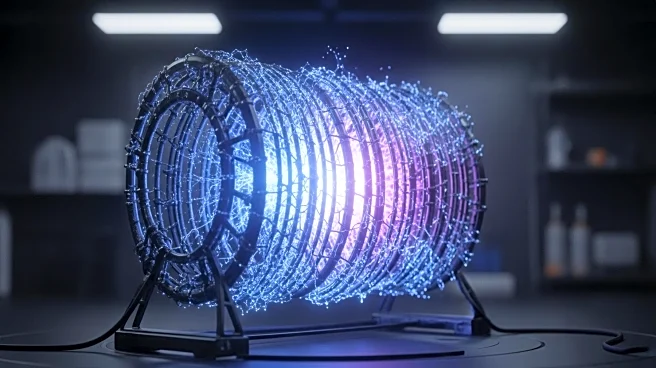What is the story about?
What's Happening?
Cornell researchers have achieved a breakthrough in 3D printing technology by developing a superconductor with record properties. The team, led by Ulrich Wiesner, utilized a copolymer-inorganic nanoparticle ink that self-assembles during the printing process. This innovative approach allows for the creation of superconductors with enhanced properties, skipping traditional steps such as synthesizing porous materials separately. The printed niobium-nitride material demonstrated an upper critical magnetic field of 40 to 50 Tesla, the highest reported for this compound, which is crucial for applications in strong superconducting magnets like those used in MRI imaging.
Why It's Important?
This advancement in 3D printing technology could significantly impact industries reliant on superconducting materials, such as medical imaging and quantum computing. The ability to produce superconductors with superior properties using a streamlined process may lead to more efficient and cost-effective production methods. This could enhance the performance of superconducting magnets and potentially lead to new applications in quantum devices. The research highlights the potential of soft matter approaches in developing next-generation quantum materials, offering a promising direction for future innovations.
What's Next?
The researchers plan to explore alternative superconducting compounds and apply their method to other transition metal compounds, such as titanium nitride. The porous architecture of the printed materials offers record surface areas, which could be valuable for designing advanced quantum materials. The team aims to make it easier to create superconductors with novel properties, leveraging Cornell's interdisciplinary collaboration among chemists, physicists, and materials scientists to push the field forward.
AI Generated Content
Do you find this article useful?











